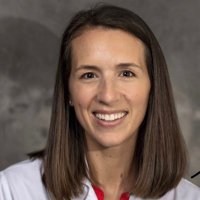
Marat Fudim, MD MHS
@fudimmarat
Duke Cardiology, 🇺🇦+🇩🇪+🇺🇸, #HeartFailure. Views expressed are my own and do not reflect the views or opinions of my employer.
ID: 716472149213634560
03-04-2016 03:47:26
3,3K Tweet
4,4K Takipçi
943 Takip Edilen


The largest single LifeVest® WCD study of NICM and MI/CAD patients shows high appropriate treatment rates during early period of contemporary GDMT. 📣 Presented as a #latebreaker at European Society of Cardiology #HeartFailure2025 📰 More: zollcms.com/4332l44


Join #HFC member Dr. Marat Fudim at #HFA_ESC for the symposium: “Which device might help your HFpEF patient?” May 20 9:45AM -10:45AM Don’t miss this important discussion on the evolving role of device therapy in HFpEF care. esc365.escardio.org/heart-failure/… Marat Fudim, MD MHS #HeartFailure2025

It was a great pleasure to present our research at LBCT session during HFA2025. Sodium is needed for decongesting and effective diuretics. Still more to come. Marat Fudim, MD MHS Rafael de la Espriella EJHF Editor-in-Chief HFAPresident the full paper will be soon published in the best HF Journal @EJHF


Heart failure (HF) = common, underrecognized in MASLD patients pubmed.ncbi.nlm.nih.gov/40389356/ *⃣ ~50% MASLD patients w/ suspected HF, ~20% diagnosed ➡️ Care pathway needed! Marat Fudim, MD MHS Cynthia Moylan Manal Abdelmalek Fouad Chouairi Yolanda (Georgia) Karachaliou, MD, MSc Sandra Au Carolyn Ahlers, MD Tor Biering-Sørensen, MD, MSc, MPH, PhD


At #HeartFailure2025, DCRI experts presented at 11 different sessions, including three late-breaking science sessions. Learn more about the new research shared during these sessions, which featured Steve Greene, Mark Kittipibul MD, and Marat Fudim, MD MHS as presenters. dcri.org/news/esc-heart…

#heartfailure2025 has been great! A lot of science & connections - 2 LBS sessions & 1 rapid fire abstract on the "Supright protocol" for invasive exercise hemodynamics International 🇺🇸🇮🇹🇵🇱 collaboration with Mark Kittipibul MD Claudia Baratto Jan Biegus piotr gajewski Marat Fudim, MD MHS



What does it mean when your watch flags a possible heart issue? American College of Cardiology released new guidance to help docs & patients interpret #CV data from Apple Watches. Beyond the Endpoint explored how docs use (or don’t use) this data in our episode on wearables: dcri.org/blog/ep-4-wear…

Biologics have revolutionized medicine—but <1% of FDA-approved therapies target heart disease. A new review explores “Cardiovascular Inhalation” as a novel lung-to-heart route for delivering biologics to treat HF (link.springer.com/article/10.100…). #HREV Marat Fudim, MD MHS Philipp Lurz

A large gap remains between meds and advanced therapies for moderate-severe HF. Synchronized diaphragmatic stimulation—a minimally invasive approach—may improve QoL, exercise tolerance, & hemodynamics. A pivotal RCT is now underway (link.springer.com/article/10.100…). #HREV Marat Fudim, MD MHS

Finerenone reduces CKD progression & CVD in T2D (FIDELIO/FIGARO), driven by ↓ HF hospitalizations. FINEARTS-HF shows benefit in HFmrEF/HFpEF. More to come from MOONRAKER in HF irrespective of EF (link.springer.com/article/10.100…). #HREV Pam R. Taub, MD❤️💃🏻 Steve Greene Marat Fudim, MD MHS Andrew J Sauer MD

FOCUS ISSUE ALERT! Submit to JCF's special Hemodynamics focus issue now - deadline for submission is **June 30**! Led by Dan Burkhoff MD PhD Susanna Mak & Mark Belkin Anu Lala-Trindade Shashank Sinha, MD, MSc, FACC, FAHA, FHFSA HFSA Journal of Cardiac Failure Dr. Martha Gulati ♥️🫀❤️🩹🇨🇦 Andrew J Sauer MD Marat Fudim, MD MHS hfsa.org/journal-cardia…


Duke Heart Failure Symposium is underway! Broad regional representation, amazing faculty and exhibitors. Our biggest event yet! Duke Heart Duke Health Duke Clinical Research Institute dukeheartfellow



The Duke Heart Failure Symposium was a blast. Learned a ton & saw so many current and former colleagues—didn’t have nearly enough time with each of you! Best part—Dr Rommel requested the baseball regionals score during his talk and Anthony put it on the timer! Duke Heart


📉 HF monitoring today sits at two extremes: invasive but effective (PA sensors) vs. non-invasive but unreliable (wearables). 💡 Subcutaneous sensors may offer a sweet spot—continuous, low-burden, and more scalable. 🧵 Read now in #HREV (link.springer.com/article/10.100…). Marat Fudim, MD MHS

Our new publication in JACC Journals! 📈 2M+ deaths from #T2DM in US (1999-2023) 🚨 Spike during COVID ❤️ 626K+ CVD-linked deaths 🔗 Full study: sciencedirect.com/science/articl… Jamal Rana, MD Steve Greene Marat Fudim, MD MHS Robert Mentz, MD Gregg Fonarow MD




